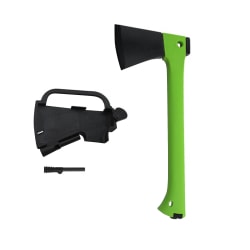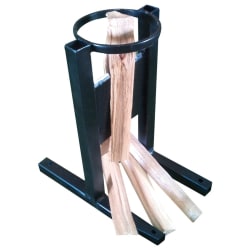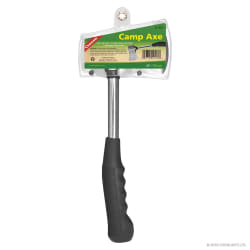How To Choose Your Braai Wood
With the warmer days finally approaching, there is no better way to bring South Africans together than with a good braai. Or as we like to call it, a shisa nyama. Any occasion is a good enough reason to get a fire going, meat marinated and enjoy a good braai with friends and family. However, a good braai depends on which wood is selected to assist with the cooking process of your food at the correct temperature to receive the best results.Here are some key points that help you choose a good braai wood:
FACTORS IN CHOOSING BRAAI WOOD

- Clean burning – Allow the coals to last longer to cook the meat well. It also lessens the amount of smoke during your braai.
- Wood Density – Dense/ hardwood is preferred to start a great fire as it burns slowly, making your braai last longer. Less dense/softwood can be used to start the fire but probably not recommended to keep the braai going unless you’re just doing a quick one.
- Wood dryness/ wetness – Avoid wet wood, as it is hard to get going and creates excessive smoke. Instead, use low-in-moisture wood that burns easily, doesn’t spit and stays burning for a long time.
- Easy to light and burn properly – Wood that burns easily produces a perfect coal base to braai your meat on.
Other factors to consider:
- You might want a wood that adds a smoky flavour.
- Pre-chopped wood is easier to burn.
- The wood of the same lumber size ensures all wood burns at the same rate.
- The size of the pack of wood required depends on the type of wood and the size of the fire.
- Lastly, the food you will be cooking is a crucial factor, as you might need wood that burns faster if you’re cooking meat such as pork or steak.
HARDWOOD VS SOFTWOOD FOR A BRAAI

Hardwood is the preferred wood to keep a good braai going because of its density and low moisture qualities. This allows it to light easily, burn well and create hotter and longer fires with less smoke compared to softer woods. Hardwoods produce a higher temperature creating consistent hot coals to braai your meat over an extended cooking period.
Softwood can also put together a good braai if well-seasoned and assorted with hardwood. However, due to its low density, softwood is not able to endure a long braai unless you have an excessive amount of wood as they burn out quicker, has poorer coaling qualities and also does produce a lot of smoke.
TYPES OF HARD BRAAI WOOD
1. KAMEELDORING
- King of Braai to many braai enthusiasts
- Has the lowest moisture levels of any of the hardwoods making it extremely dry and heavy.
- It creates a large amount of hot slow burning coals and generates almost no smoke.
- It gives off a musky aroma, adding extra smokiness to food
2. SEKELBOS
- Another favourite among the braai crowd as it creates a hotter flame than your average braai wood.
- This dry and hard wood produces intense heat and burns longer with little smoke.
- It contains natural oils that add a lovely smoky flavour to the food.
- Recommended for braais and potjies as it is a great, naturally dried in sun, hardwood.
3. MOPANI
- A very dense, dry and slow-burning hardwood.
- It creates a large number of hot burning coals in a very short period.
- It is slow burning and might be a struggle to get the fire lit but will be worth it in the end.
- It is naturally termite resistant and good for outdoor use
4. BLACK WATTLE
- Eco-friendly firewood as it is alien vegetation that is urged to be chopped down and used.
- Softer than other hardwoods but still creates sufficient hot coals that burn long.
- Easy to light and slow burning for longer-lasting fire
- Provides meat with a smoky taste.
- Perfect for pizza ovens, potjies and fireplaces.
5. ROOIKRANS
- Very popular in the Western Cape and is sold at almost every petrol station
- Dry, dense and slightly aromatic adding a smoky flavour to the meat
- Can produce coals in about 40min
- Its fire can remain heated for about an hour for you to cook on it.
6. APPLE WOOD
- Great source of firewood as it produces a lot of heat with good coaling qualities.
- Has a sweet aroma to add flavour to food
- Perfect for pizza oven wood
7. BLUE GUM
- This wood is usually a little wet and is best used for fireplaces, campfires and stoves
- Burns very hot and longer than traditional woods, generating great coals
- If you want it to burn even longer, dampening the wood is recommended
8. BRIQUETTES
- Clean burning, 100% organic and an alternative to high-quality logs
- Easy to light and produces a long-lasting fire with very little smoke
- Great fuel for a wood-burning stove and well suited to kettle braais
TYPES OF SOFT BRAAI WOOD
1. PINE
- Burns quickly so it is ideal to start a braai and to get it going instantaneously
- Does not burn very long so it is not recommended to be used as the main wood
- Has an enjoyable earthy aroma
2. BOSVELD MIX
- This mixed wood is sold in most stores and streets in South Africa.
- Quite affordable
- It Burns fast, so you will have to buy an excessive amount of wood
3. WINGERDSTOK
- Found in wine-growing parts of South Africa
- Also known as gnarled vine wood
- Produces lots of hot coals.
With the right wood and tools, you can achieve the best braai outcome possible. Hardwood is recommended to achieve the best braai experience as it produces a higher temperature over a longer cooking time but we are not limited to using one type of braai wood. You can try mixing various types of woods to get your desired temperature, longevity and flavour. The most important part of the braai is to ensure that the fire NEVER goes out.
NOTE: If you are not sure what type of wood you are using, first check to see if it burns safely and if it is not poisonous.





